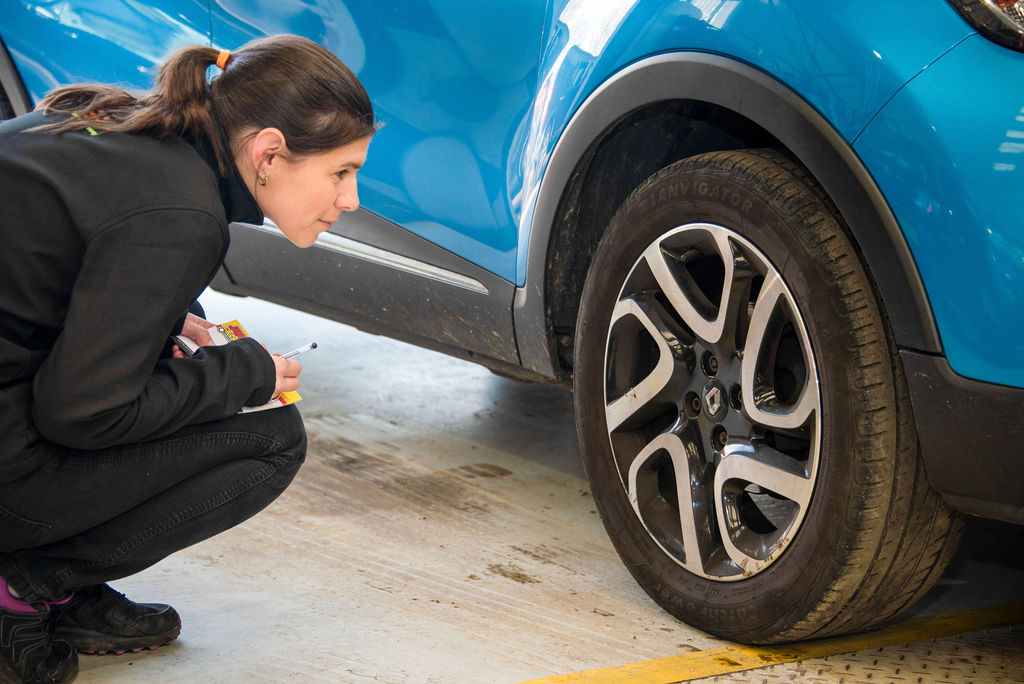How to look after your tyres during winter (and stay safer on the road)

You don’t need us to tell you cold and damp weather dramatically affects driving.
With less grip between you and the road, steering, braking and accelerating requires a little more concentration to safely get from A to B.
But it’s not just winter that makes life harder behind the wheel – it’s also the condition of your tyres. In harsh temperatures, air pressure can drop overnight, which, if left unattended, could make you a danger on the road.
With that said, let’s take you for a spin through the importance of checking your tyres, and how to keep them in top condition during winter.
Why is it important to check tyre pressure?
By maintaining the correct air pressure in your tyres, you’ll benefit from optimum traction on the road. Not only does that mean better control of your vehicle, it also means:
- improved fuel efficiency
- safer driving experience
- less noise on the road
- extended life of tyres
During the colder months, it’s advisable to check your tyre pressure every two weeks. As tempting as it is to rush into your vehicle on a bitter winter’s morning, taking a few minutes to check your tyres is well worth the chattering teeth.
How does cold weather affect tyre pressure?
Drastic changes in weather have an impact on tyre pressure. When temperature decreases by 10℃, tyre air pressure drops anywhere between 0.07 to 0.14 bars. That might not sound like much, but it’s enough to impact traction and overall handling of your vehicle.
If you own a modern vehicle with a tyre pressure monitoring system (TPMS), you’ll receive a dashboard warning if your tyres drop in air pressure. As soon as you see a warning, take immediate action by adjusting tyre pressures yourself, or by contacting your local garage.
If you want to check the recommended tyre pressure, refer to your vehicle handbook, or check for a printed slip on the inside of your fuel cap or on the sill of your driver’s door.
How to check tyre pressure
Before anything else, make sure you’re using a pressure gauge with the same unit of measurement displayed in your vehicle handbook. It’ll make your life a lot easier.
Once you’re equipped with the right gauge:
- Remove valve cap and secure pressure gauge on tyre valve system. (Tip: put valve cap somewhere safe.)
- Check reading on gauge and compare to recommended air pressure.
- If required, inflate tyres in short bursts whilst regularly checking new reading.
Repeat process for all four tyres (as pressure will vary). And don’t forget to check your spare wheel too.
How often should you check tyre pressure during winter?
As excessive as it might sound, checking your tyre pressure every two weeks during the colder seasons is a safe bet. When you’re checking air pressure, also look out for any cuts and tears as well as general tread depth (1.6mm is the minimum legal requirement).
In short, look after your tyres and they’ll look after you.
What tyres do we recommend?
At C R Allen & Sons, we’d always recommend Avon tyres for your vehicle. As a popular mid-range choice, they’re more durable than budget tyres and more affordable than premium alternatives such as Michelin, Goodyear and Continental.
Depending on how you drive and road conditions on your typical routes, you can expect to get around 20,000 miles out of your front tyres and 40,000 miles from your back tyres before they’ll need replacing.
If you book your tyres to be replaced by us, we also include new valves, a balance check and FREE disposal of your old tyres.